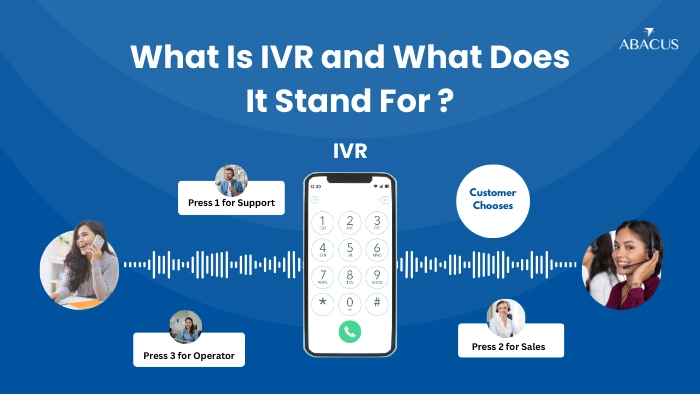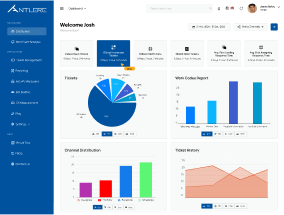IVR Setup Mistakes: Common Pitfalls and How to Avoid Them
One of the most popular tools of communication with customers is an IVR (Interactive Voice Response system). It serves as the support line in front of most businesses to make calls, handle high-volume calls, and reply fast without a human being. Configured properly, an IVR can turn a call center into a seamless, efficient process that benefits customer satisfaction as well as performance.
Understanding and preventing these pitfalls is essential for businesses that want to provide a positive customer experience while maximizing the potential of their IVR phone system.
Overcomplicated Menu Structures
The most common errors in IVR setup are to make menus too complex. Most companies overwhelm their IVR systems with countless choices and think they are helping you by doing all the possibilities. Actually, the reverse occurs: customers get overwhelmed, frustrated and more likely to dump the call altogether.
For an IVR call center or IVR contact center, this is a critical problem, as the first interaction often sets the tone for the entire customer journey. Keeping the menu short, with clear and logical choices, ensures that callers can find the support they need without unnecessary friction.
Ignoring Caller Intent
The other most common error is that an IVR solution is developed based on internal organization instead of based on the needs of the callers. A voice response system that is interactive needs to be constructed to support the most frequent questions and issues that are raised by customers. Far too frequently, companies design their IVR menus based on the names of departments or the hierarchies of an organization rather than on what the customer wants to know.
This disconnect creates frustration and wasted time. By using interactive voice response testing, companies can better understand caller intent and tailor menus that align with real-world behaviors, not just internal processes.

Poor Audio Quality
Poor audio quality is capable of ruining the entire experience. Low-quality recordings, robotic text-to-speech or inconsistent tones make an IVR call center sound unprofessional. Customers often judge a company’s credibility based on these small details, and a weak IVR service can send the wrong impression.
A polished, professional, and clear voice is essential for building trust and keeping customers engaged throughout their journey with the IVR phone system.
No Option to Reach a Human Agent
Probably the most prevalent of all IVR installation errors is the failure to give customers the chance to talk to a human being when necessary. However sophisticated IVR technology may be there can always be cases when sympathy, logic and problem solving are needed.
Forcing callers through endless loops without the option to connect to a live agent erodes trust and leaves customers dissatisfied. A smart IVR solution should strike a balance automating common queries while ensuring human support is always available as a backup.
Outdated IVR Systems
With the development of businesses, people forget that they need to improve the IVR services. The presence of obsolete menus, faulty paths and useless prompts leads to confusion and discontentment. An IVR is not a set and leave it tool, it needs updates to be effective. Frequent audits, content updates, and menu changes make the interactive voice Response Call Center accurate, streamlined, and aligned to the present demand of the business.
Lack of Multilingual Support
The other error that is ignored is the provision of multilingual options. The modern global market provides a variety of businesses that serve different populations. IVR services available in only one language will provide a hurdle to customers who aren’t particularly skilled in that language. Providing explicit and prompt language options reflects inclusivity and makes the IVR phone experience functional to all people, irrespective of their background.
Skipping Performance Monitoring
Most businesses commit the error of implementing IVR solutions and assuming that they will last indefinitely. Unless checked on a regular basis, businesses lose the chance of becoming more efficient and improving the customer journey.
Companies can optimize their IVR systems by investing in interactive Voice Response testing to analyze the points of drop-offs, duration of calls, and customer response. Continued performance measurement makes the IVR more of a dynamic resource that changes with customer demands.
Benefits of Avoiding IVR Setup Mistakes
It is possible to measure the benefits in avoiding these typical IVR setup errors. First, it will make the customer experience easier and less frustrating and enhance customer satisfaction. Customers who are able to fix their problems fast will tend to be more loyal and trust the business. At an operations level, well-designed IVR solutions will reduce call handling time, minimize call miss-routing and free the agent to work on more complicated issues.
This shows increased efficiency in terms of cost savings and resource allocation within the IVR contact center. Furthermore, a polished IVR phone system strengthens brand perception by signaling professionalism, clarity, and respect for the customer’s time.
What Is IVR and What Does It Stand For?
What is IVR? The term stands for Interactive Voice Response, a technology that allows callers to interact with automated menus using voice or keypad inputs.
Businesses often ask “what does IVR stand for” in practice? It represents more than just automation it’s the customer’s first impression of your brand when contacting a support line.
Gradually, IVR’s have progressed beyond basic menu-based systems to become sophisticated IVR technology based on artificial intelligence, natural language processing, and enhanced IVR services. Nowadays an IVR telephone system is much more than a routing system; it can identify people, take payments, provide account details and even be linked to digital channels in an interactive voice response call center system.

The Future of IVR Technology
Moving forward, the future of IVR systems is in more intelligent AI enabled solutions. Keypad navigation is being replaced with conversational IVR, where people can talk in a normal way, and the system can recognize context and purpose. IVR solutions will be integrated with CRMs, chat bots, and omnichannel platforms to form a seamless experience between the phone, web, and mobile. In the case of business, this move towards intelligent IVR technology will translate to increased personalization, predictive routing, and reduced resolution times.
Those who invest in innovative IVR services will be in a better position to satisfy their customers, with those who stick to the old model facing the risk of being sidelined.
Testing and Continuous Improvement
The most sophisticated an IVR system is, the further it will be used, only by trial and error. Interactive Voice Response Testing makes sure that all call paths are active, prompts are visible and that routing is consistent with actual caller data.
Monitoring key metrics such as call abandonment rates, resolution times, and customer satisfaction surveys provides insights that fuel ongoing improvement. By treating the IVR service as a living system that evolves with business needs, organizations can avoid the pitfalls of constant errors and deliver superior customer experiences consistently.
Conclusion: Smarter IVR Solutions Start with Avoiding Mistakes
To create a customer-focused approach to communication, paying attention to the most typical IVR setup issues is critical. The trust is lost and users are frustrated by overcomplicated menus, bad quality audio, old prompts, and the absence of human support. Conversely, an effective interactive voice response system will generate efficiency, satisfaction and loyalty.
To prevent the most typical IVR installation errors and optimize their customer support processes, it can be essential to work with a trusted partner such as Abacus Outsourcing. Abacus has a long history of providing optimized IVR systems to clients, which allows them to achieve smooth IVR systems that minimize errors, enhance routing, and provide better customer satisfaction. Your IVR services are not only efficient but also designed to suit your business requirements by utilizing the most recent IVR technology available at Abacus Outsourcing.









